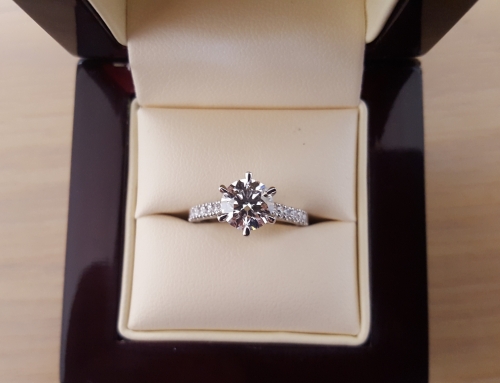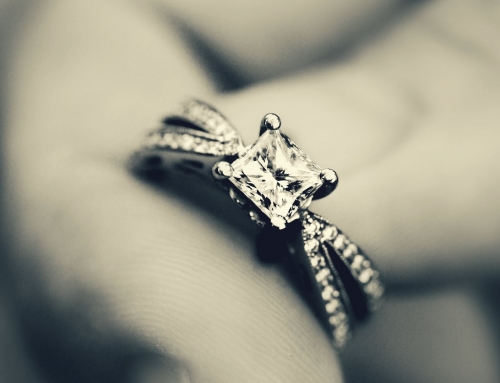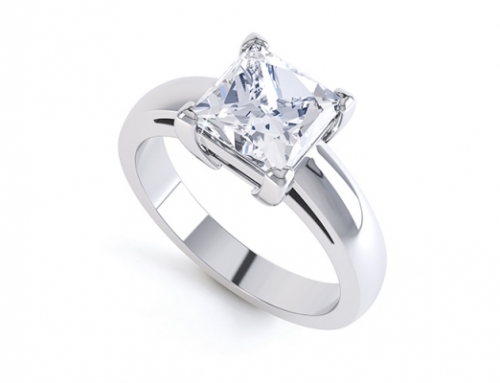It is now a huge industry in its own right… and the biggest brands market them, lab grown diamonds. Those in the precious diamond industry are constantly evolving techniques to detect lab grown diamonds. The price at which they sell is very tempting. So, should one propose with a lab grown diamond?
What is the difference between lab grown and naturally mined diamonds?
“Man-made” diamonds, “lab grown” or “synthetic” diamonds have evolved so much so that they look and sparkle just as good as a real diamond. This is thanks to technology. While there are many new techniques, essentially the stone is “created” under enormous high pressure and high temperature. I have even come across stones which are “custom-made” with either hair or ashes of a dear one who has passed on.
Lab grown diamonds have been around since the 1950’s when they were created for industrial use in drills, mining equipment and semi-conductors. They possess the same chemical and optical properties as a naturally mined diamond but are created in a matter of weeks in a laboratory. One needs specific advanced technological equipment to tell the difference between a naturally mined and lab grown diamond. And the lab grown diamonds are on average 20% – 40% cheaper than equivalent naturally mined diamonds and they are getting cheaper over time. However, coloured lab grown diamonds (think pink and canary yellow coloured lab grown diamonds) can be equally as expensive as their natural counter-parts. This is because they are hard and time consuming to create in a lab.
Naturally mined diamonds are precious and rare. It is a natural feat of carbon crystallising into diamonds over millions of years deep inside the earth and are brought to the surface through volcanic activity. Only about 30% of these diamonds are big enough and of a quality that is suitable to be made into precious jewellery. Those stones that are of a higher colour and clarity grade, those that are bigger in carat size and those that have naturally occurring colour in them (pinks, canary yellows, blue, and red) are even more rare.
In terms of resale value, neither the naturally mined nor lab grown diamonds have the same resale value as a new diamond. Just like a car. Unless, you own a particularly rare diamond, you will fetch less for your diamond – lab grown or naturally mined. This is why I advise my clients, buy a diamond for the emotional value, enjoy wearing it and pass it down the family – like a beautiful classic watch or a strand of pearls. If you are looking for investment, there are other asset classes that offer better returns. The only exception to this rule is if you have the privilege of a ‘blank cheque book’ and are able to invest in truly rare diamonds which will have a resale value.
Should I propose with a lab grown diamond?
There are now many big jewellery brands that offer beautiful and very attractive lab grown diamond jewellery options. Whether or not you should propose with a lab grown diamond depends very much on concerns you (and your partner-to-be) may have about naturally mined diamonds.
Are you concerned about the environment and the impact of mining on our natural resources?
Well, that is a valid concern. And it is not my position to try to convince you one way or the other. It is important that every person is entitled to their opinion and that those opinions are respected.
If you harbour such concerns, but would like to consider a naturally mined alternative to lab grown diamonds, you can consider the diamonds mined in the Diavik mine in Yellowknife, the remote North-west territories of Canada. This is one of the most environmentally friendly mining operations and one that aims to leave no foot-print behind once the mine is closed. (Further reference: www.riotinto.com)
Are you concerned about mining practices and conflict diamonds?
The diamond industry is also governed by the United Nations Kimberley Process which has over the years played an important role in ethical supply chain processes to stamp out conflict diamonds and unethical labour practices in mines. In recent years, technological advances are assisting this cause with the ability of tracing diamonds from mine to market. But these tracing abilities continue to evolve and develop as technology advances and becomes more wide-spread.
Are you concerned about the price of real diamonds?
Lab grown diamonds are on average 20% to 40% cheaper than a naturally mined diamond and are becoming cheaper still. They have similar chemical and optical properties as a naturally mined diamond and hence, being visually impossible to tell the difference unless tested by sophisticated equipment. All this has made them very attractive.
Personally speaking, I must admit that I am old-school in my thoughts. If I was to propose to a loved one, the decision would be a combination of an emotional and financial trade-off: It is a commitment for a life time. And it is to the love of my life. And it is meant to be a symbol of my commitment to her for life. Are these reasons enough to warrant proposing with a naturally mined precious diamond?
Then there is the issue of what is my budget and affordability at that point in time. If I am aiming to embark upon a new life with a life partner then obviously there will be plenty more expenses – marriage, acquiring property, holiday, and so on.
Hence, my decision to purchase a naturally mined diamond does not have to cost me the earth as well. It is perfectly fine to start small and within whatever the budget may be. As time progresses and as your relationship solidifies you can always choose to upgrade.
Decision’s, decision’s…
It is understandable if one is cautious given the number of relationships that end in tears and divorce (believe it or not but one can make impulsive decisions when in love!). It is fine to start small with a lab grown diamond and upgrade to a beautiful naturally mined diamond later in life as and when you are absolutely sure about each other and your relationship.
If you do choose to go for a naturally mined precious diamond, then ensure that you receive an independent diamond grading certificate and that the ring is valued by an independent valuer for insurance purposes.
And the most important thing is the love and mutual respect you share for each other. So, whatever you decide, it will be right for you at that point in time.






